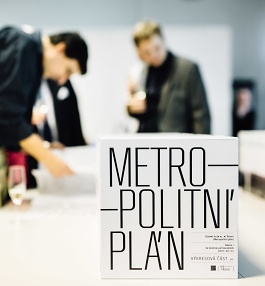
The Old Prague Club criticizes the metropolitan plan: it will allow the construction of more high-rise buildings
 |
“Currently, high-rise buildings can emerge randomly in Prague, as there is no comprehensive regulation of high-rise construction. The metropolitan plan is the first document that brings regulation for the entire territory of Prague. The construction of buildings higher than 12 stories, which is the height of a typical Prague panel house, will be prohibited on 99.4 percent of the territory of Prague,” said IPR director Petr Hlaváček to ČTK.
The metropolitan plan is a strategic document that stipulates where and what can be built. It is set to take effect from 2020. “Instead of attempting to suppress high-rise construction in the city, the plan instead offers 14 new locations specifically designated for high-rise buildings. The plan also confirms controversial interventions and even includes areas located within the central panorama of the city,” the club writes in its statement regarding the proposal of the metropolitan plan.
High-rise buildings are currently mainly located in Pankrác; the tallest one is the 109-meter high twenty-seven-story skyscraper City Tower. In the future, they could be constructed, for example, in Roztyly, Chodov, Rohanský Island, Vysočany, or Libeň. According to Švejda, however, these are not new locations, but most already have high-rise buildings.
The city has until now not centrally regulated high-rise construction at all, so it has occurred randomly. "Those who propose skyscrapers should explain what benefits they bring for quality of life or the preservation of values that Prague already has, and how the city will cope with the increased burden, particularly in terms of transport,” Kolínská previously told ČTK.
The association also criticizes the possibility of increasing the heights of buildings on major city thoroughfares. Buildings there could have two additional stories, and at corners, four additional stories. “Something like this is common even today – no high-rise regulation forbids it,” Švejda explained. According to him, the plan does not account for raising corner buildings by up to four stories; only towers and oriels are permitted. “Corner towers are a typical feature for Prague, and we did not want to eliminate it with overly strict height regulation,” the spokesman added.
The preparation of the plan has already cost the capital around 50 million crowns, but it is experiencing delays. Experts and the city hall also claim that the proposal is not in accordance with the building law. The director of the section responsible for the urban plan at IPR, Roman Koucký, was dismissed by the institute director in mid-June. The council also decided that by the end of August, a team of experts would assess the draft plan. Discussions with the public are expected to begin in the autumn.
The English translation is powered by AI tool. Switch to Czech to view the original text source.
0 comments
add comment
Related articles
0
19.02.2025 | The new Prague zoning plan could be ready by spring next year
0
24.04.2018 | Survey: The Metropolitan Plan Will Not Be Completed, Thinks Prague Politicians
0
15.06.2017 | Developers are concerned about the emerging Prague zoning plan
0
14.12.2016 | The Metropolitan Plan of Prague will be completed by architect Roman Koucký
0
28.06.2016 | The team of experts will assess the proposal for the metropolitan plan for two months
0
07.06.2016 | IPR submitted the metropolitan plan to Prague, which will now be reviewed by officials
0
07.06.2016 | How does urban planning work in Prague? Experts will compare the metropolis with foreign cities











